Welcome to Arizona! Things A Newbie to Arizona Should Know
 03 May 2022
03 May 2022 
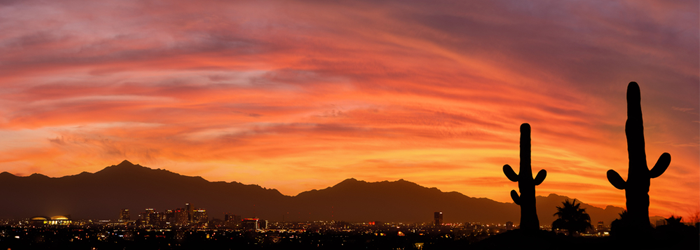
Living in Arizona is unlike living anywhere else
Where else can you wander amongst the saguaros and within four hours, cruise through the pinions, up to the pines, and to the most amazing geological spectacle on Earth? Arizona.
Where else can you go skiing and an hour later soak up the warm sun and go swimming all on the same day? Tucson.
Where else can you see the original London Bridge without going to London? Lake Havasu.
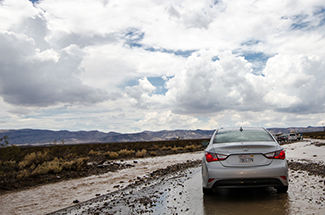 Maybe that is why since 2010, according to Census.gov 759,485 people moved to Arizona between 2010 and 2020. That’s an 11% increase in population!
Maybe that is why since 2010, according to Census.gov 759,485 people moved to Arizona between 2010 and 2020. That’s an 11% increase in population!
Are you one of Arizona’s newbies? If so, welcome! Being new to the Grand Canyon State there are some important things you need to know.
Stupid Motorist Law
Yeah, we have a law called “The Stupid Motorist Law.”
Why? Contrary to popular belief, it does rain in Arizona. Sometimes the rain is so abundant that our hard soil can’t quickly soak it up, therefore we experience flash floods. Every time we experience heavy rainfall, the washes flood. Despite barricades being placed at flood zones with signs stating, “DO NOT CROSS,” inevitably, people ignore them, try to cross, and need to be rescued. Thus, the term and law.
State Statute 28-910 states:
- A driver of a vehicle who drives the vehicle on a public street or highway that is temporarily covered by a rise in water level, including groundwater or overflow of water, and that is barricaded because of flooding is liable for the expenses of any emergency response that is required to remove from the public street or highway the driver or any passenger in the vehicle that becomes inoperable on the public street or highway or the vehicle that becomes inoperable on the public street or highway, or both.
- A person convicted of violating section 28-693 for driving a vehicle into any area that is temporarily covered by a rise in water level, including groundwater or overflow of water, may be liable for expenses of any emergency response that is required to remove from the area the driver or any passenger in the vehicle that becomes inoperable in the area or the vehicle that becomes inoperable in the area, or both.
There is some question as to whether motorists are actually fined. It is our tax dollars that fund the rescue departments. Regardless of whether there is a charge, just don’t do something stupid like driving around a barricade. Not only will you be putting yourself and your passengers in harm’s way, but you could also be putting the lives of the rescuers in peril.
Your House
Considering that we are Rosie on the House, let's talk about your house.
Maintaining a home in Arizona, particularly in the desert areas, is a lot different than maintaining one in Minnesota, Florida, the California coast, Seattle, and other climates.
Water
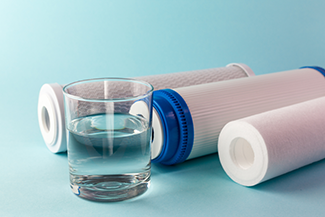 Arizona’s water is so hard that we nearly need a knife and fork to drink it.
Arizona’s water is so hard that we nearly need a knife and fork to drink it.
The USGS explains that hardness is caused by compounds of calcium and magnesium, and by a variety of other metals. General guidelines for the classification of waters are 0 to 60 mg/L (milligrams per liter) as calcium carbonate is classified as soft; 61 to 120 mg/L as moderately hard; 121 to 180 mg/L as hard; and more than 180 mg/L as very hard.
The "hardness" of the water flowing into your home depends on how many grains of the minerals it contains per gallon. This is called grains per gallon, or GPG. The water is drinkable.
Water that contains more than 1 GPG is considered somewhat "hard"; water with more than 10.5 GPG is very hard. A typical glass of Arizona water has at least 15 GPG!
Hard water is hard on the plumbing and fixtures. Plus, the mineral deposits are a pain to remove if they build up.
Do yourself a favor and invest in a water treatment system. A water softener removes the minerals that make your water "hard" all over the house. An activated carbon charcoal filter on a reverse osmosis (RO) system will finish the job of removing floaties and chlorine.
Check out Rosie’s Water Filtration Guide
Supercooling
 We tend to turn on our air conditioning units as early as March and sometimes don’t turn them off until October. It can get expensive if you constantly adjust the temperature. Keep your electric bill in check by supercooling your home.
We tend to turn on our air conditioning units as early as March and sometimes don’t turn them off until October. It can get expensive if you constantly adjust the temperature. Keep your electric bill in check by supercooling your home.
Here’s how:
- Make sure you are one a time of use power plan first.
- Turn your AC down as low as you can stand it (68-74 degrees) during your off-peak hours. This will cool your whole house down to the studs. It will cool the walls, the clothing in your closets, and the carpet under the couch! That way when your off-peak hours are over, that cooling will last and carry you through your on-peak hours.
- Turn your AC up as high as you can stand it (78-85 degrees) during your on-peak hours. This will allow your AC to shut off and save you money during the most expensive time of day. The coolness you built up during your off-peak hours should last you well into the evening before your AC needs to cool you down again.
- During the on-peak time, try your best to not run other appliances, heat up the house by cooking, or leave doors open for extended periods. Lock in that cool air!
- Make sure your pumps and electric water heaters are timed to never turn on during peak hours.
Long-time listeners of Rosie on the House have heard Rosie talk about the importance of a whole-house energy audit or home performance audit.
An energy specialist will take an in-depth look at your home’s typical and atypical energy loss points. Using thermal imaging technology to see what the unaided eye can’t, a series of tests will be conducted to ensure that the gas appliances are properly working, and the windows and doors aren't drafty. Once the specialist knows exactly where your home's energy loss is coming from, they will tell you what you can do to solve the problem.
Shade
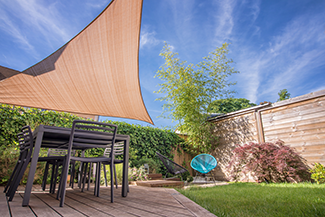 Shade is at a premium in Arizona. It’s not unheard of for us to circle a parking lot for 10 minutes to look for a parking spot in the shade.
Shade is at a premium in Arizona. It’s not unheard of for us to circle a parking lot for 10 minutes to look for a parking spot in the shade.
Keep a window shade in your car. If you do a lot of driving, add the rolldown shades that you can place on the side windows to keep the sun from penetrating through the glass.
Invest in shade screens for your home.
Creating shade can be as simple as strategically planting a tree on the south or west side of the home to reduce the amount of energy it takes to cool your house down. Rosie recommends, "homeowners should consider the mature size of the tree you choose before planting. Plant far enough from the home that the roots won't interfere with the foundation. Also, branches overhanging the roof can cause damage to the roof and provide a highway for critters to get on the house and into the attic."
Shade sails are very popular. Rosie cautions that they are not a DIY project and should be designed by a licensed structural engineer. If they are bolted to a fascia, they can rip the entire fascia off the house in the event of high winds. If poles are used to support a sail, they require massive footings to keep them from being pulled out of the ground in high winds.
Dust
Invest in a quality duster. You will be amazed at how much dust will accumulate in your home every week, especially when you keep the windows open.
Take it a step further and install an air purifier in your home.
Valley Fever, a fungal infection caused by coccidioides organisms can cause signs and symptoms such as a fever, cough, and tiredness. The fungi are commonly found in soil in specific regions, such as Arizona. The fungi's spores can be stirred into the air by anything that disrupts the soil, such as farming, construction, and wind.
People can then breathe the fungi into their lungs. Mild cases of valley fever usually resolve on their own. In more severe cases, doctors treat the infection with antifungal medications. Animals can also be stricken with Valley Fever.
Dust storms, also called haboobs, are common and they can come on quickly, especially along the interstates. It is essential that you know what to do when driving in a dust storm. Tips for driving in a dust storm.
Out & About
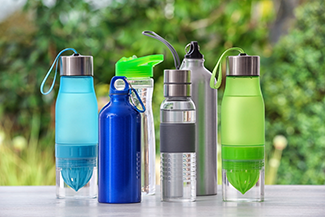 Avoid long walks and hikes in the high heat of mid-day. When you are out and about in the hotter months, carry a frozen bottle of water. It will turn to cold, refreshing water in no time. A Cold Rush Towel around your neck will also help keep you cool.
Avoid long walks and hikes in the high heat of mid-day. When you are out and about in the hotter months, carry a frozen bottle of water. It will turn to cold, refreshing water in no time. A Cold Rush Towel around your neck will also help keep you cool.
If you go for a hike, take much more than an 8-oz. bottle of water. You may think you like the heat, but it doesn’t take long for heat stroke to occur.
Wear a wide-brimmed hat and sunscreen.
Think you can run out barefoot to the mailbox in July without shoes to get the mail? Think again! Put those flip-flops on, otherwise, you will give Usain Bolt a run for his money!
Keep a towel in your car, even oven mitts. In the summer, our cars are hotter than Mt. Vesuvius. Place a towel on your seat and over the shift. Put a cover on the steering wheel.
Sure, we wear sweaters! Arizonans in the desert areas wear them in July -- indoors when the AC is cracked to near freezing in every restaurant and movie theater. Always keep a light sweater in your car.
Also, always carry cold freshwater everywhere, especially in the hotter months. It is critical that you stay hydrated. Consider keeping a cooler in your car so you always have cold water available. A cooler is also helpful when going grocery shopping.
Pet Care
 Never Ever. Ever. Ever. leave your pets unattended in the car.
Never Ever. Ever. Ever. leave your pets unattended in the car.
Not only is it inhumane, but it is also against the law. Under A.R.S. 13-2910, it is considered animal cruelty if a person intentionally, knowingly, or recklessly leaves an animal unattended and confined in a motor vehicle and physical injury to or death of the animal is likely to result.
If you can’t stand the heat of an unconditioned car, your pet can’t either.
Walk your dog early in the morning or late in the evening to avoid the hottest part of the day. If your dog must go outside on the pavement, mid-day during the hottest months, use protective paw booties. If you won't walk on a hot surface, don't make your pet do it. Make sure your pets have plenty of cold fresh water all day, every day.
See a stray dog? Before trying to rescue it, make sure it's not a coyote. Speaking of coyotes, don't leave pets unattended outside. Coyotes, bobcats, mountain lions, hawks, and owls, can easily scoop them away from your yard.
Click Here for more pet safety tips.
Welcome to Arizona!
As a newbie to Arizona, there is so much to do and see outside of your home. Visit Arizona offers ideas for places to visit throughout our state as you get acclimated to becoming a “Zonie.”
Tune in to Rosie on the House each Saturday and subscribe to our weekly newsletter to learn more amount maintaining your Arizona home.
We are here to be every Arizona homeowner’s best friend. We love helping new residents navigate their new homes as it is so different here than anywhere else. From heat packs to flat roofs to water softeners, let Rosie on the House guide you through making your Arizona house a home.
###
Podcast
Are you one of Arizona’s newbies? If so, welcome! Being new to the Grand Canyon State, there are some important things you need to know. We discuss air conditioning, hard water, monsoon season and the Stupid Motorist Law. Plus homeowner questions on low toilet water levels, sewer smell coming from the sink p-trap and how to replace 90 degree metal corners to rounded corners for drywall.
Photo Credit
- Shutterstock
Related Content
- Blog: “Keep Your Cool!” Shade, Sunscreens, Supercooling, And More!
- DIY FAQ: Would My Home Benefit From A Water Treatment System?
- DIY FAQ: Drenched In Love - For Your Water
Print this page
recent post
- Duck, Duck, Duct! How Often Should Ductwork Be Cleaned?
- Vinyl vs. Fiberglass Windows: Which Is The Better Choice Of Replacement Window?
- We May Be The Grand Canyon State, But The Rocky Mountains Are Important For Arizona
- Welcome to Arizona! Things A Newbie to Arizona Should Know
- The Pros & Cons of Buying A Flipped House
- Getting In On The Ground Floor
- Why It’s More Critical Than Ever To Get Your AC Serviced Before Summer
- The Reality of Remodeling
- What To Look For When Comparing Your Roofing Quotes
- What To Expect When Buying New Windows & Doors
